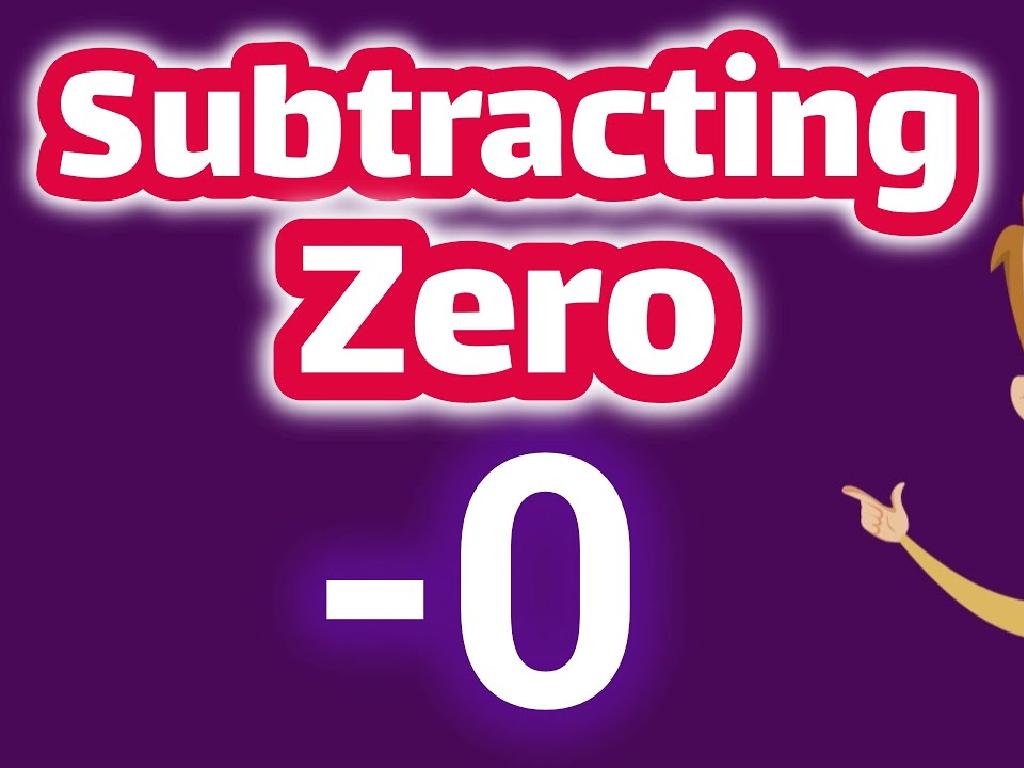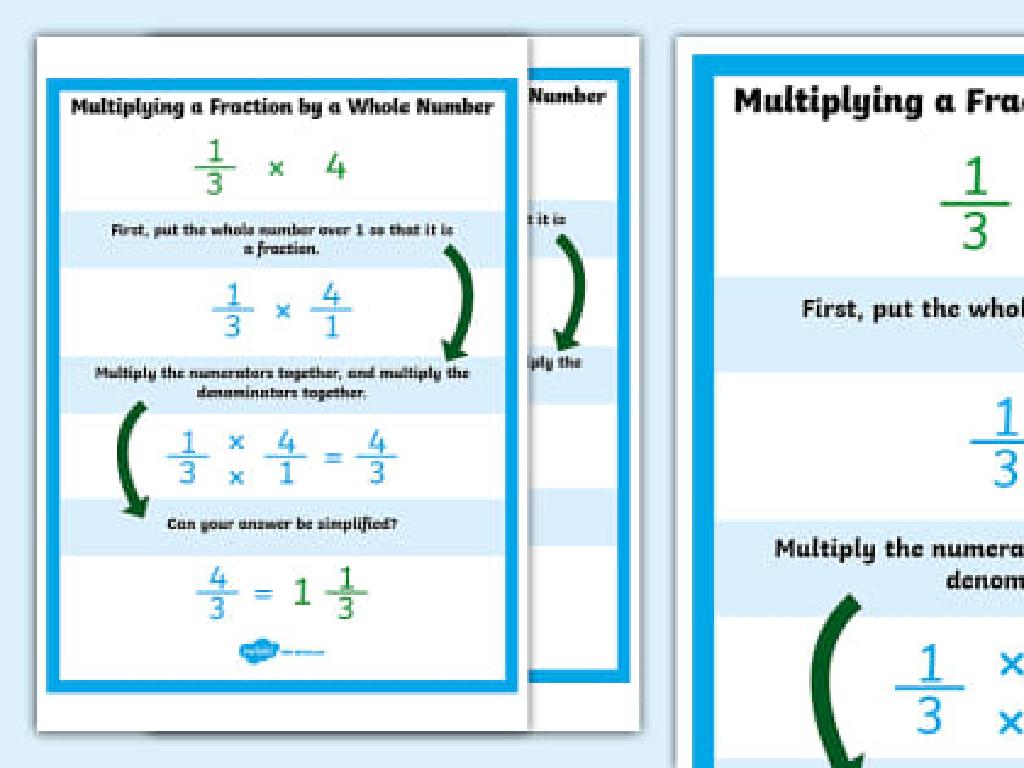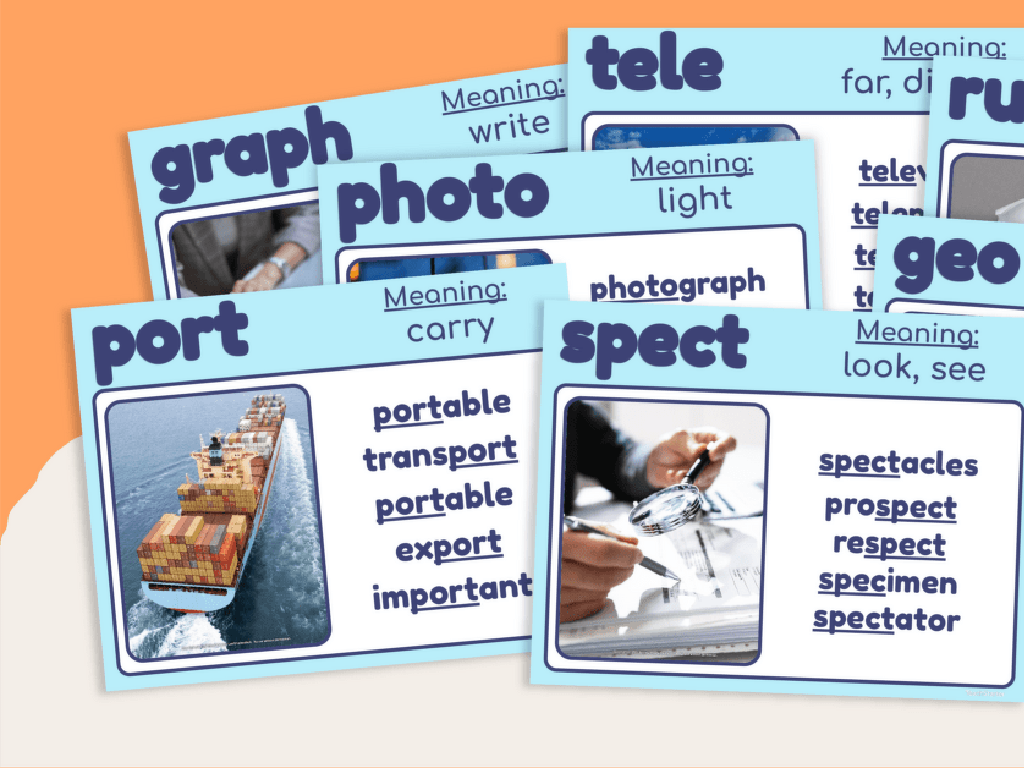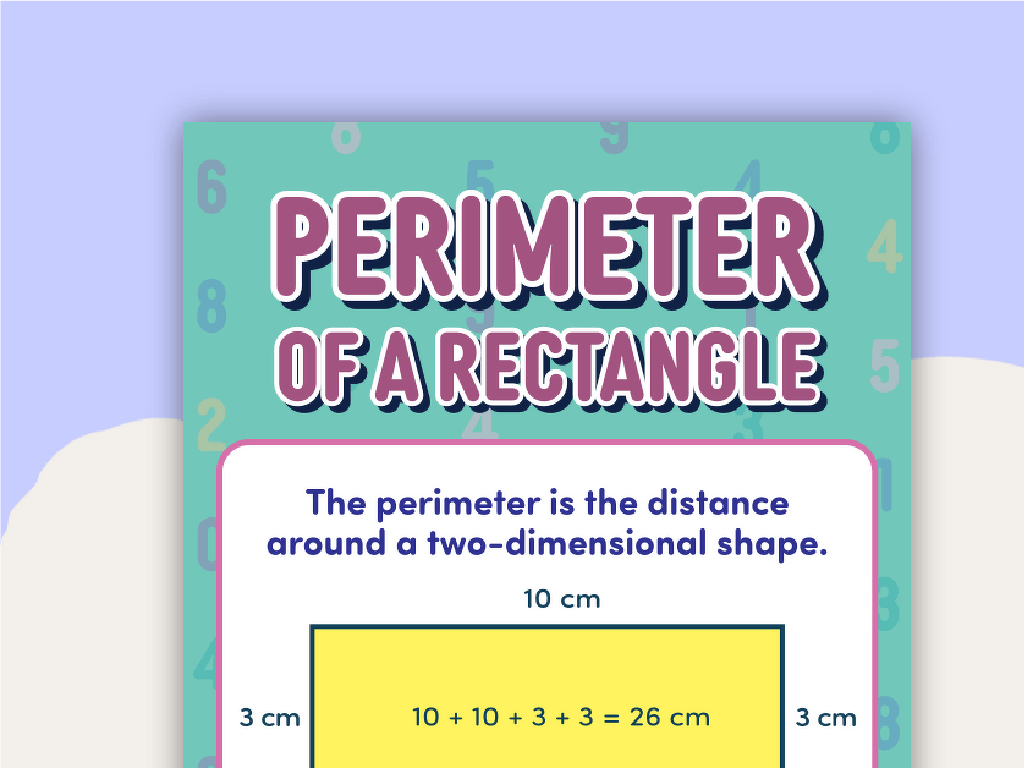Solutions To Inequalities
Subject: Math
Grade: Sixth grade
Topic: One-Variable Inequalities
Please LOG IN to download the presentation. Access is available to registered users only.
View More Content
Introduction to Inequalities
– Understanding ‘greater than’ and ‘less than’
– Symbols > and 5, means x can be any number greater than 5.
– Real-life inequality scenarios
– Situations like age limits for games (must be > 12 years old) or minimum height for rides.
– Solving basic inequality problems
– Learn to find values of variables that make an inequality true.
|
This slide introduces the concept of inequalities, focusing on understanding the symbols for ‘greater than’ and ‘less than’ and how they are used to compare numbers. One-variable inequalities are equations that show a range of possible solutions instead of one exact answer. Provide real-life examples where inequalities are applicable, such as age restrictions or height requirements, to make the concept relatable. Encourage students to think of other daily life scenarios where inequalities apply. Conclude with an introduction to solving simple inequalities, setting the stage for more complex problem-solving in future lessons.
Representing Inequalities
– Understanding inequality symbols
– Symbols show how numbers relate
– Meaning of >, means greater, < means less, e means greater or equal, d means less or equal
– Real-world inequality examples
– Examples: Age restrictions, height for rides, or grades needed to pass
– Practice with inequality symbols
– Use symbols to compare numbers and situations
|
This slide introduces students to the basic symbols used in inequalities and what they represent. It’s crucial to ensure that students can identify and understand the meaning of each symbol: greater than (>) and less than (<), as well as greater than or equal to (e) and less than or equal to (d). Provide relatable examples that they encounter in everyday life, such as age limits for certain games or movies, minimum height requirements for amusement park rides, or the passing grade for a test. Encourage students to think of other examples where these symbols might apply. After the presentation, engage the class in an activity where they use these symbols to represent different scenarios or compare quantities.
Writing Inequalities from Statements
– Translate verbal statements
– Convert words like ‘less than’ into symbols like ‘<'
– Write inequalities from problems
– Use word problems to form mathematical inequalities
– Class participation activity
– Students create and share their own inequality problems
– Practice with real-world examples
|
This slide introduces students to the concept of writing inequalities from verbal statements and word problems. Start by explaining how common phrases in English translate to inequality symbols (e.g., ‘less than’ to ‘<', 'at most' to 'd'). Then, provide practice problems where students write inequalities based on given word problems. For the class participation, encourage students to think of scenarios from their daily lives that can be expressed as inequalities. This activity will help them understand the practical application of inequalities. Provide guidance and examples to ensure they grasp the concept. The goal is for students to become comfortable with translating everyday language into mathematical expressions and to recognize inequalities in various contexts.
Solving One-Variable Inequalities
– Steps for solving inequalities
– Identify the inequality sign and isolate the variable on one side.
– Solve by adding/subtracting
– Add or subtract the same number from both sides to maintain balance.
– Solve by multiplying/dividing
– Multiply or divide both sides by the same number, reverse the inequality if multiplying/dividing by a negative.
– Checking solutions
– Substitute the solution into the original inequality to verify.
|
This slide introduces students to the systematic approach to solving one-variable inequalities. Start by explaining the importance of maintaining the balance of an inequality, similar to solving equations. Emphasize that the inequality sign dictates the relationship between the two sides. When adding or subtracting, the inequality sign remains the same. However, when multiplying or dividing by a negative number, the inequality sign must be reversed. After finding the solution, always check by substituting the solution back into the original inequality to ensure it makes the inequality true. Provide examples for each type of operation and encourage students to practice with problems of varying difficulty.
Graphing Solutions on a Number Line
– Graphing inequality solutions
– Plot the solutions of inequalities on a number line to visualize the range of answers.
– Open vs. closed circles
– Open circles indicate a number is not included in the solution, while closed circles mean it is included.
– Interactive class example
– We’ll go through an example together. Think of an inequality and let’s graph it!
– Practice with student input
|
This slide introduces students to the concept of graphing solutions to inequalities on a number line. Begin by explaining that graphing helps us see all possible solutions at a glance. Discuss the difference between open and closed circles, emphasizing that open circles represent ‘less than’ () and closed circles represent ‘less than or equal to’ (d) or ‘greater than or equal to’ (e). Use an interactive example to engage students: ask for volunteers to provide an inequality, then graph it together on the board, deciding as a class whether to use an open or closed circle. Finally, allow students to practice this skill by graphing their own examples with guidance as needed.
Solving Inequalities: Practice Time
– Let’s solve inequalities together!
– Work on practice problems individually
– Try problems like x + 3 > 5 or 2x d 10
– Discuss solutions as a class
– We’ll review answers and methods
– Learn from common mistakes
– Understanding errors helps us improve
|
This slide is designed to engage students in active practice of solving one-variable inequalities. Start by solving a few examples together as a class to demonstrate the process. Then, allow students to work individually on a set of practice problems, which should include a variety of inequality types. Afterward, come together as a class to discuss the solutions. Emphasize the importance of showing all steps in their work. Highlight and discuss common mistakes to help students learn and avoid them in the future. Provide guidance on how to check their answers by substituting values into the original inequality. Encourage students to ask questions and support each other in understanding the concepts.
Class Activity: Inequality Scavenger Hunt
– Find real-life inequality examples
– Pair up to solve related inequalities
– Use examples to form and solve inequalities
– Share findings with the class
– Reflect on the importance of inequalities
– Discuss how inequalities apply in daily life
|
This interactive class activity is designed to help students recognize and understand inequalities in real-world contexts. Students will work in pairs to search for situations where inequalities are naturally present, such as comparing heights, prices, distances, or ages. They will then use these examples to create and solve mathematical inequalities. After solving, pairs will present their findings to the class, explaining both the real-life scenario and the mathematical solution. This will foster a deeper understanding of the concept and its practical applications. For the teacher: Prepare a list of potential examples in case some students struggle to find their own. Encourage creativity and ensure that each pair has a different example to maintain variety in the presentations. Possible activities could include comparing sports scores, measuring items in the classroom, or discussing time management scenarios.
Wrapping Up: Inequalities & Homework
– Review of inequality concepts
– We revisited how to solve and graph inequalities.
– Significance of inequalities
– Solving inequalities is crucial for real-life problem solving.
– Homework: Inequality practice
– Complete the worksheet to practice solving and graphing inequalities.
|
As we conclude today’s lesson, it’s important to recap the key concepts of solving one-variable inequalities. Understanding inequalities is essential as they are not just a part of mathematics but also a tool for making decisions in everyday life. For homework, students are assigned a practice worksheet that includes a variety of inequality problems. This will help reinforce today’s lesson and build their confidence in solving these types of math problems. The worksheet should be completed and ready to be discussed in the next class. Encourage students to attempt all problems and remind them that practice is key to mastering inequalities.






